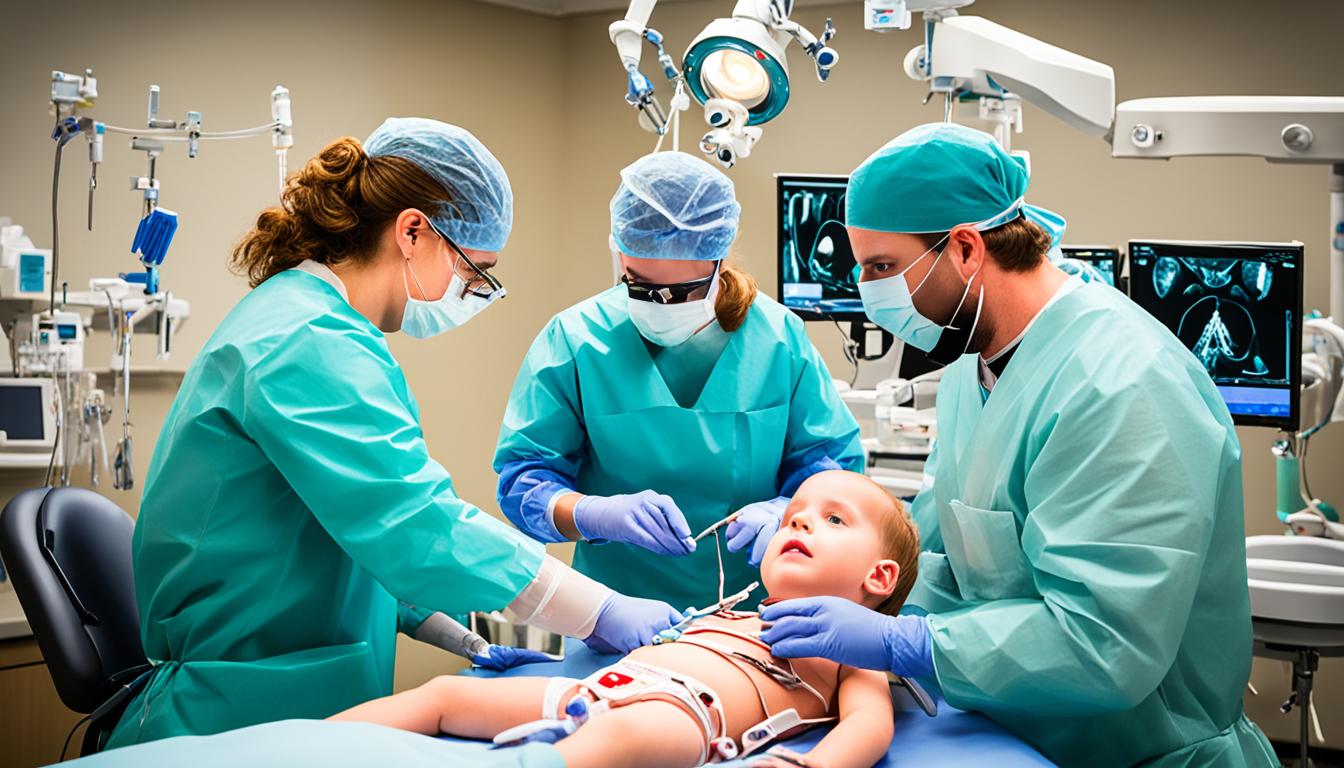Wilms tumor, also known as nephroblastoma, is a common kidney cancer in kids. It accounts for about 7 percent of all pediatric cancers. Both boys and girls get it equally. It is usually found during early childhood. Sometimes, the tumor can be very big. It may also spread to the lungs, brain, and bones. The way to treat Wilms tumor varies. It depends on the cancer’s stage and how quickly it grows.
Removing the tumor with surgery is often the first step in treatment. Experts from different fields work together to help kids with Wilms tumor. These include pediatric surgeons and oncologists. Plus, radiation oncologists are also part of the team. Their combined efforts have led to high cure rates. But, there are still some challenging cases. For these, new treatments like stem cell therapy are under study.
Key Takeaways:
- Wilms tumor is the most common kidney cancer in childhood.
- Treatment for Wilms tumor depends on the stage and aggressiveness of the tumor.
- Surgical removal of the tumor is the mainstay of treatment.
- Collaborative strategies involving different specialists have improved cure rates.
- Stem cell therapy may offer potential treatment options for Wilms tumor.
Wilms Tumor Causes, Symptoms, and Diagnosis
Wilms tumor, also known as nephroblastoma, starts with genetic mutations in kidney cells. These mutations happen after birth. Most cases are not in families, but some people with certain genetic syndromes have a higher risk. These include WAGR syndrome, Denys-Drash syndrome, and Beckwith-Wiedemann syndrome.
A key sign of Wilms tumor is a lump in the belly that doesn’t hurt when you touch it. Other signs can include the belly looking swollen, veins that are bigger than usual, pain, blood in the pee, not wanting to eat, feeling tired, a fever, and high blood pressure. If you notice any of these signs, see a doctor for more tests.
To find out if someone has Wilms tumor, doctors do different tests. They start by checking the patient’s medical history and doing a physical exam. Then, they might do an ultrasound, CT scan, MRI, and chest X-ray to see the tumor. These tests help show how big the tumor is and where it is in the body.
Most of the time, doctors need to remove the tumor and the kidney that’s affected by it. This surgery, called nephrectomy, is important for both diagnosing and staging Wilms tumor. It helps doctors understand how to best treat the patient.
Wilms Tumor Treatment and Follow-Up
The treatment for Wilms tumor is based on each case’s stage and how fast the tumor is growing. Doctors usually start with surgery. They remove the damaged kidney and check the nearby lymph nodes. This step helps find out the tumor’s stage and lowers the chance of it spreading.
After surgery, chemotherapy is usually the next step. This is a must for all patients, helping to kill any tiny bits of the tumor left and making it less likely to come back. Sometimes, patients might also need radiation therapy. It’s used to further shrink the tumor or to treat it if it comes back.
Patients might also get medicines for pain, high blood pressure, and to fight off infections. The treatment they receive can change based on their specific needs. Decisions about care are made with the help of a team of experts in the medical field.
It’s crucial to regularly check in with the doctor after treatment. This is for keeping an eye on the child’s health, spotting new signs of the disease, and making sure the kidneys are working well. This ongoing care includes regular check-ups and tests to protect the child’s health and make any needed changes in the treatment plan.
Doctors are always working to improve how they treat Wilms tumor. They are involved in clinical trials and research. The goal is to find more effective treatments and to reduce any harmful effects from the therapy.

